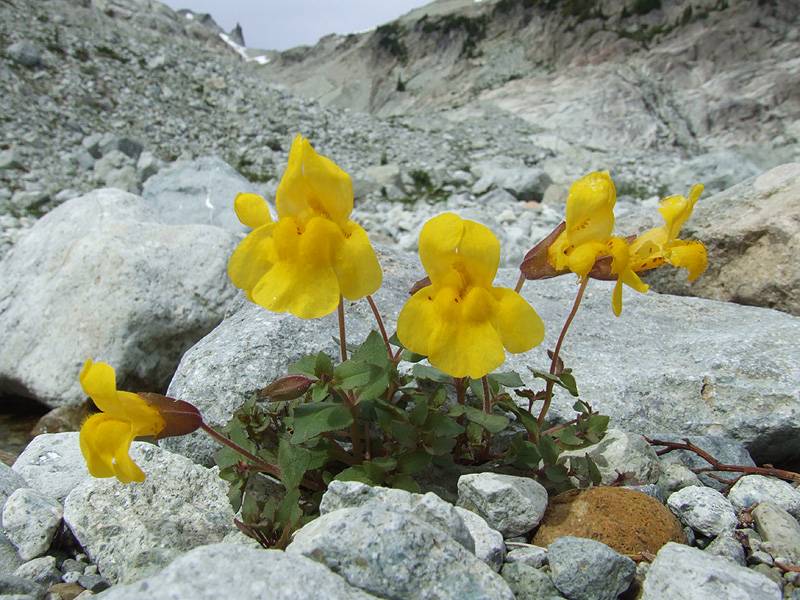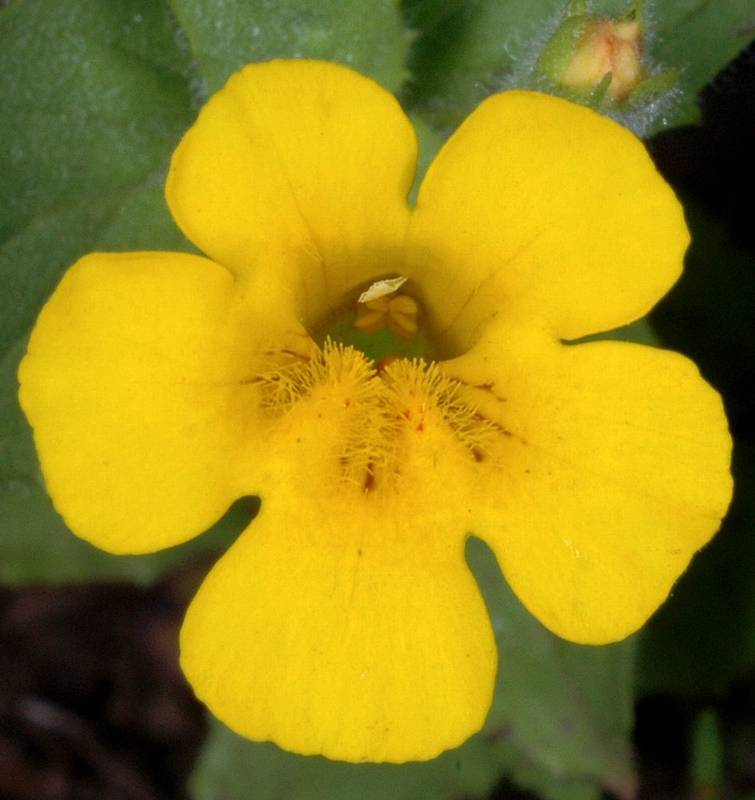Erythranthe tilingii
Erythranthe moschata
musk-flower, musk-plant
Leaves opposite, mostly sessile, the blade under 2.5 cm. long, elliptic to ovate, slightly reduced upward, with a few irregular teeth, sub-palmately veined.
Leaves opposite, remotely toothed, pinnately veined, sessile or short-petiolate, the blade ovate to elliptic-ovate, 1-8 cm. long and 7-35 mm. wide.
Flowers few, solitary in the leaf axils, on long pedicels;
calyx 5-toothed, irregular, the upper tooth much the largest, the 2 lower ones tending to fold upward;
corolla large for the size of the plant, 2-4 cm. long, strongly bilabiate, with flaring throat, yellow with maroon dots or splotches on the pubescent lower lip;
stamens 4.
Flowers solitary in the leaf axils on long pedicels;
calyx 7-13 mm. long, viscid-villous, especially on the 5 rib angles, the 5 teeth pointed, 2-4 mm. long, the upper tooth a little larger than the others;
corolla 1.5-3 cm. long, yellow, often with some dark lines or dots, only slightly bilabiate, the tube nearly cylindrical;
stamens 4.
Capsule.
Capsule.
Erythranthe tilingii
Erythranthe moschata
- Local floras:
BC,
CA,
OR
- Local Web sites:
CalFlora,
CalPhotos,
Flora NW,
PNW Herbaria
WildflowerSearch
iNaturalist (observations)
- LBJ Wildflower Center
- SEINet
- Plants of the World Online
- Encyclopedia of Life
- Wikipedia
- Google Image Search
- Local floras:
BC,
CA,
OR,
WA
- Local Web sites:
CalFlora,
CalPhotos,
Flora NW,
PNW Herbaria
WildflowerSearch
iNaturalist (observations)
- LBJ Wildflower Center
- SEINet
- Plants of the World Online
- Encyclopedia of Life
- Wikipedia
- Google Image Search



